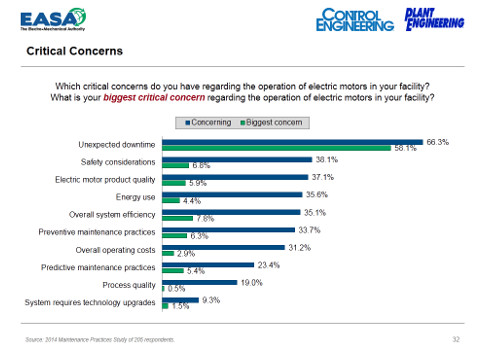The creation of a motor repair accreditation program through the Electrical Apparatus Services Association (EASA) will help bring more information about motor repair techniques to benefit both the end user and the service centers. EASA officials prepared a series of frequently-asked questions about the program.

The creation of a motor repair accreditation program through the Electrical Apparatus Services Association (EASA) will help bring more information about motor repair techniques to benefit both the end user and the service centers. EASA officials prepared a series of frequently-asked questions about the program:
1. Why is EASA developing such a program?
As the electromechanical authority, EASA strives to develop and promote the highest standards of practice that improve industry productivity. The EASA Accreditation Program provides assurance to end-user customers that industry good practices are followed in the repair of electric motors.
2. Will this lead to better motor repairs?
Unexpected equipment downtime is the greatest concern for plant maintenance personnel. Since many motors installed in critical applications are not readily available from inventory stocks, motor repair remains a critical solution to getting the plant back in operation.
With the assistance of CFE Media, EASA conducted a survey of plant maintenance practices followed by Plant Engineering readers. One of the questions identified plant engineer’s critical concerns regarding the operation of electric motors. Overwhelmingly, plant engineers identified unexpected downtown as their most critical concern.
While many motor repairs performed today follow industry best practices, the EASA Accreditation Program provides plant personnel with the additional assurance of an independent third-party audit of these practices which are critical to motor reliability and efficiency.
3. On what is the new program based?
EASA’s Accreditation Program incorporates ANSI/EASA AR100: Recommended Practice for the Repair of Rotating Electrical Apparatus. Updated in 2010, this represents the industry’s standard for the repair of electric motors.
4. What’s been the response from other interested parties? End-user customers? Motor manufacturers? Government agencies?
When asked about their interest in a motor repair accreditation program, one-half of the Plant Engineering readers who responded to the CFE Media survey showed support for the program, and noted further that this would improve the overall quality of electric motor repairs.
5. What differences will the average end-user customer see in the future once their motor repair service provider becomes accredited?
A quality motor repair not only provides the customer a cost effective solution, but in many cases provides valuable insight into the root cause of the failure. Often this points to a broader, more serious, application issue.
Plant maintenance personnel overwhelmingly believe that motors repaired according to industry good practices provide reliability levels equivalent to new motors.
Less than one-third of manufacturing plants today use a motor repair specification. The requirements of ANSI/EASA AR100: Recommended Practice for the Repair of Rotating Electrical Apparatus form the foundation of the EASA Accreditation Program. The standard provides end-user customers with documented test results showing the motor’s condition, both before and after repair, for a range of electrical and mechanical motor performance parameters.
6. What is the accreditation process?
The standards address both electrical and mechanical aspects of motor repair practices. Service Centers must meet specified equipment and instrumentation standards including requisite calibration practices. Further aspects address documentation of the initial evaluation of the failed motor and subsequent repair procedures, pre/post motor testing, and education/training of service center personnel. Overall, obtaining EASA Accreditation requires adherence to more than 70 separate criteria for motor repair.
Service Centers interested in accreditation can obtain the standards and requirements from EASA’s website at www.easa.com/accreditation. As an initial step, a self-audit is recommended.
Subsequently, a Service Center will engage one of three (soon to be four) independent audit firms to conduct the accreditation review and site visit. Each firm has a history working with electric utility energy management/conservation programs for commercial and industrial facilities. In this regard, they are familiar with electric motor repair practices and motor testing protocols.